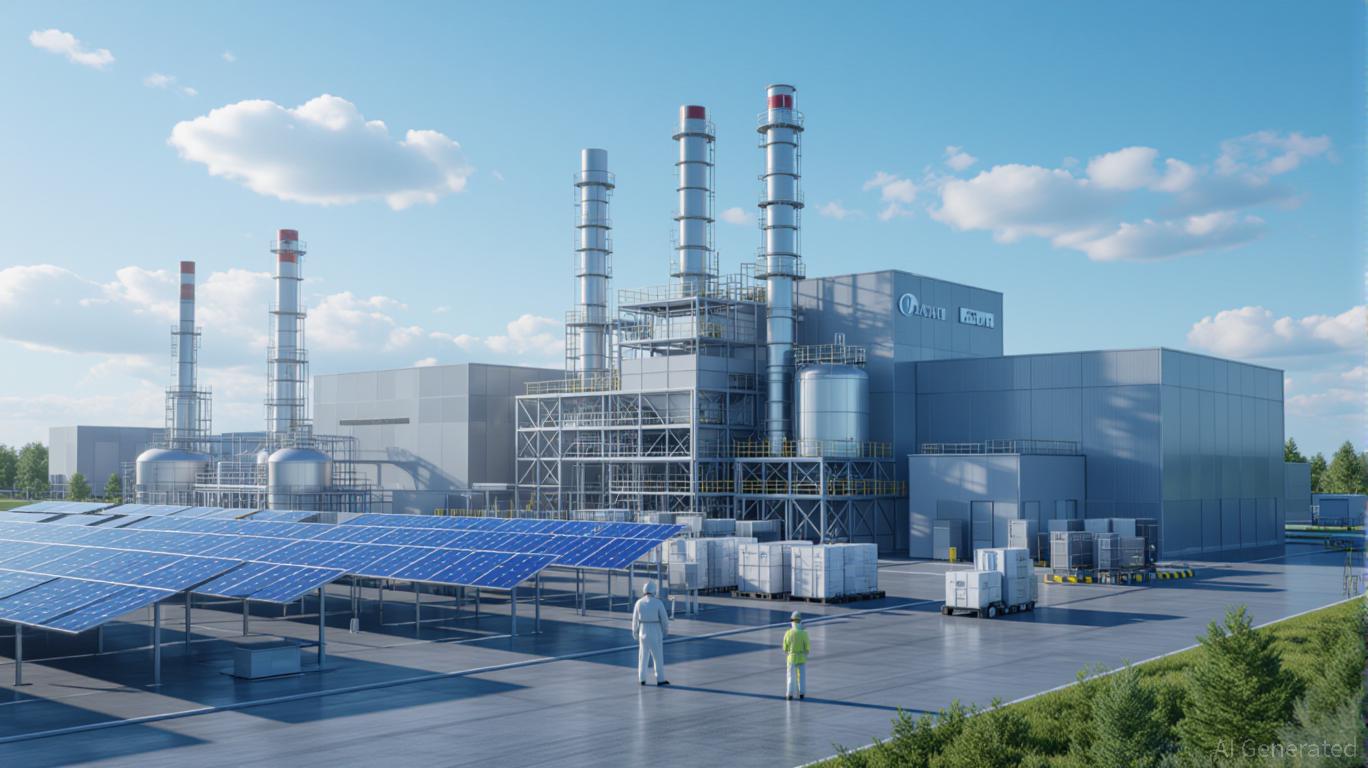
In an era where decarbonization is no longer a choice but a mandate, Linde PLC (LYB) has emerged as a linchpin in the global energy transition. The industrial gas giant is leveraging its record $7.1 billion project backlog, robust cash flow generation, and a strategic focus on clean energy to position itself as a long-term winner in the race for net-zero. For investors, this confluence of growth drivers and financial discipline presents a compelling case to consider Linde as a core holding in a climate-conscious portfolio.
A $7.1 Billion Backlog: A Pipeline of Future Cash Flow
Linde’s project backlog has more than doubled over four years to $7.1 billion, with a significant portion tied to high-margin, long-term contracts in the energy transition. These projects are not just large in scale but also high in quality: many are secured by fixed-fee agreements with Fortune 500 clients, ensuring predictable revenue streams. For instance, a landmark deal to supply gases for a world-scale low-carbon ammonia facility on the U.S. Gulf Coast underscores Linde’s ability to lock in value from hard-to-abate sectors like manufacturing and shipping.
The backlog is also a testament to Linde’s engineering prowess. Its expertise in hydrogen production, carbon capture, and gas processing positions it to capitalize on the $10 billion low-carbon hydrogen market. By 2030, the carbon capture, utilization, and storage (CCUS) market alone is projected to grow at 7.4% CAGR, a space where Linde is already deploying AI-driven efficiency tools to reduce costs.
Cash Flow Fortitude: Fueling Growth and Shareholder Returns
Linde’s financial strength is equally impressive. In Q2 2025, the company reported $2.2 billion in operating cash flow, a 15% year-over-year increase, and a 6% rise in adjusted operating profit to $2.556 billion. This cash flow is being allocated strategically: $5.0–5.5 billion in capital expenditures for 2025 will fund the $7.1 billion backlog while maintaining a $15 billion share repurchase program and a 9% dividend increase in 2025.
The company’s disciplined approach to capital allocation is a key differentiator. CEO Sanjiv Lamba has emphasized a “measured view of macro trends,” ensuring that investments are targeted toward high-impact projects. For example, Linde’s recent expansion into the space industry—supporting clean tech applications in satellite propulsion—demonstrates its agility in identifying emerging markets.
Clean Energy Tailwinds: A $10 Billion Hydrogen Bet
Linde’s clean energy initiatives are not just strategic but also deeply aligned with global policy tailwinds. The company’s technologies have already helped customers avoid 96 million metric tons of CO2e, a figure that will only grow as demand for low-carbon hydrogen surges. With a $10 billion backlog in hydrogen projects—including green hydrogen powered by renewables and blue hydrogen with carbon capture—Linde is uniquely positioned to benefit from the sector’s projected $1.5 trillion market size by 2050.
Partnerships like its collaboration with Yara in Norway to produce green hydrogen for ammonia further reinforce its leadership. These projects are not speculative; they are grounded in long-term contracts with stable margins, reducing the volatility typically associated with emerging technologies.
Investment Implications: A Buy-and-Hold Case
For investors, Linde’s combination of near-term visibility (via its backlog), strong cash flow, and exposure to multi-decade energy transition trends makes it an attractive buy. The stock’s 30.1% operating margin and 80 basis point margin expansion in Q2 2025 highlight its operational efficiency, while its $7.1 billion backlog ensures a steady pipeline of growth.
Moreover, Linde’s ability to balance reinvestment with shareholder returns—boosting dividends by 9% in 2025 while repurchasing $15 billion in shares—demonstrates a management team focused on both long-term value and short-term rewards. In a market where ESG investing is increasingly mainstream, Linde’s clean energy credentials add another layer of appeal.
Historical data from a backtest of LYB’s performance around earnings releases from 2022 to the present reinforces the case for a buy-and-hold strategy. The stock has exhibited a 71.43% win rate over 3 and 10 trading days post-earnings, with a 50% win rate over 30 days. Notably, a maximum return of 2.31% was observed on day 9 following earnings releases, underscoring the stock’s tendency to trend upward in the near term. These patterns suggest that Linde’s strong fundamentals and disciplined execution have historically translated into consistent post-earnings performance, offering investors a reliable foundation for long-term exposure.
Conclusion: A Net-Zero Champion with a Legacy of Execution
Linde is more than a beneficiary of the energy transition—it is an architect. Its $7.1 billion backlog, robust cash flow, and deep technical expertise create a virtuous cycle of growth and reinvestment. As governments and corporations accelerate their climate commitments, Linde’s role in enabling decarbonization will only expand. For investors seeking a company that bridges traditional industrial strength with future-facing innovation, Linde offers a rare and durable investment thesis.
“””
